British Hedgehogs are now officially classified as vulnerable to extinction but the human threat to hedgehogs is by no means new. Hedgehogs in History There have been all kinds of superstitions and myths around the humble hedgehog. One such belief was that they use their spines to take the impact, if they should fall from a height. Or that they collect food by rolling around and skewering it on their spines and then carry it home to store. Generally, in Christianity the poor hedgehog seems to be depicted as the evil one or as doing evil. In Irish lore the Hedgehog is associated with witches that would take on their form and then suck dairy cows dry. In China, the hedgehog is one of five sacred, but not to be messed animals which also includes the fox, weasel, snake and rat. In Slavic tales the hedgehog is considered the keeper of knowledge and order and the embodiment of magical power.  In 1539 King Henry VIII passed the preservation of grain Act, one of many Tudor acts that listed a number of birds and “vermin”, the killing of which was rewarded with a bounty. It offered bounties consistent with the species potential to cause a nuisance from 12p for a fox or badger down to 1p for a Red Kite.  In 1566 Queen Elizabeth I then bolstered the original bill and the statute set the price at 2p per hedgehog head, which was double that of a wild cat or small mustelid! This might not sound like much, even in today’s money it would only be a couple of pounds but it’s important to remember that most people were cripplingly poor. This goes someway to explain why so many bounties were claimed. In the late 17th and early 18th centuries, half a million bounties were paid on hedgehogs alone*! The fact that the bounty was higher for hedgehogs than for cats or small mustelids reflects the strength of the belief that they were significant egg thieves, or that they would drink dairy cows dry in the night! I recommend this website for further reading about hedgehogs in general: https://www.wildlifeonline.me.uk/articles/view/how-to-make-your-garden-hedgehog-friendly *Roger Lovegrove’s book Silent Fields
0 Comments
 It wasn’t always the done, recommended thing to take your dog to training classes. But when it first became popular to take your companion dog to training, the standards that were set were taken mostly from the military. Some of those exercises are still practiced today at some classes; but perhaps we need to be asking ourselves, are these exercises really appropriate for us and our companion? If our dog is going to be a pet, do we really need to train them as we would a show dog, or a police dog, or a sheep dog? It is not always a positive experience for the dogs or the owners. Now let us be clear, nobody wants a badly behaved dog, aside from he stress it can cause a badly behaved dog that is out of control can be dangerous. So what training is useful to both the companion and their owners and what perhaps should be left to the ‘professional career dogs’?
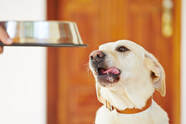 Then there is waiting to be fed! Sigh! This is a constant battle in our house every morning and evening. We have a child gate on our kitchen so we can keep them at bay whilst we get their meals ready. Now nobody wants to be knocked over as their dog dives for their bowl. I don’t see the benefit of making a dog wait unnecessarily for their food and it only seems to serve the humans need to exercise power over the dog simply because they can. There are some very old fashioned and dated training that would insist the dog be made to sit and wait for so long after the bowl is presented that is nothing more than teasing. You really don’t want your dog to find mealtime stressful, when that can lead to all sorts of other issues.  Teaching “Down” is another useful skill in keeping your dog still but only really works if they will stay in the down position whilst you deal with what ever it is that you need to do. This posture is also difficult for deep chested dogs, or those with injuries, sore hips, knees or elbows. So again, for those dogs its kinder to teach hem to stand. If you go to a dog friendly café, it is perfectly fine for a dog to lay out on their side if they find it more comfortable as long as they are not in anyone’s way. Most dogs will be fine to arrange themselves on a towel or blanket, so make sure you have one in with your walking essentials.  “Heel” can also be a useful tool to keep your dog out of mischief. It also helps you safe from being tripped up and stops that really frustrating habit of some dogs that have of walking half a step right in front of you! But does your dog need to be glued to your side on and off the Lead? Your dog will find walks much more fulling if they can have a certain amount of freedom to sniff out the local news and post some articles of their own. Why must they walk on your left? This is actually another ruminant from the military, that pets don’t need! You’re not on parade. In reality it’s more sensible to keep your dog on the safe side away from any traffic. Being able to get your dog to “Stay” is also a useful skill for both you and your dog and your safety. But it’s important to see the difference between asking your dog to remain in place whilst you answer the door or close a gate and a stay that has your dog wondering if you’re coming back. This can be really tough for anxious or nervous dogs. There are a few other useful skills that you will find handy to have in your tool kit. But more about Come, Leave it and Drop it another time.
Until then remember, training your dog is about keeping them and you safe, happy and maintaining a strong bond or trust and respect. Don’t compare yourself and your dog to others and do what’s best for you, your canine companion and your family.  Pointer Treat Stick x 2 £1 These popular treats come in a variety of flavors, including: Tripe, Lamb and Rice, Chicken and museli & Peanut Butter. Loved by many of our four legged fur clients, of all different breeds! 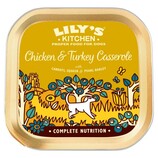 Lily’s Kitchen for Dogs 150g Tray £1.10 These delicious Wet Food Trays are available in 9 different flavours! Giving you plenty of tasty options for your Fur Friends! All natural ingredients with no nasties.  Bottom Sniffer Dog Beer 330ml £2.99 Share a drink with your pooch, thanks to a beer specially made for dogs (Non Alcoholic). A great treat, rich in vitamins and minerals. With Nettle- good for coats and skin, Dandelion- a great antioxidant, all in natural Chicken Flavouring.  Beco Pod £2.89 A lightweight poop bag dispenser that fastens onto most leads. It is made from bio-hybrid material containing cornstarch and bamboo. Fits all standard poop bag rolls and 15 degradable poop bags are included. True Hemp Dog Treats 50g £4.99
Natural Treats infused with hemp and plant based active ingredients. Every treat contains Hemp Leaf, Green Tea, Chamomile & Lemon Balm to keep your dog calm and relaxed. Its 14th July 2020 and it’s shark awareness day! You might think of sharks as giant, blood thirsty killers of the tropics and the silver screen but did you know there are over 40 species in British waters! Over half of them live here all year round, though you are highly unlikey to ever come across any of them when your out for a paddle. But you might find evidence of small-spotted catsharks or Nursehounds, also known as greater-spotted dog fish. These sharks lay eggs that sometimes get washed up on shore, sometimes called mermaids purses. There are also at least 11 species of deep-water sharks Including the Portuguese Dogfish, Black Dogfish, Kitefin Shark and Gulper Shark. Tragically scientist consider over 50% of British sharks to be threatened or near threatened. This includes the once common Angel shark which is now rarely seen and is listed as critically endangered! In 2008 the Shark Trust helped to get domestic protections for the Angel shark and they are now some of the most heavily protected sharks in the Northeast Atlantic. To find out more about the work the Shark Trust does with Angel sharks check out the link below.  Between May and October, when the weather is usually warmer, you could be lucky enough to see the second largest fish in the world, the Basking shark which filter feeds on tiny plankton likes to bask in the sun, hence the name. These gentle giants can grow up to 12 meters long, second only to the Whale shark; and weighs as much as 6 tonnes. The North East Atlantic population is classed as Endangered and are protected in the UK under the wildlife and countryside act. Another seasonal visitor is the short fin Mako, the fastest shark on record, they can reach 30 mph, allowing it to catch fast prey like tuna and sword fish.  Sightings of sharks in British waters should a cause for celebration, not alarm. Back in 2015 at the RSPB site at Medmerry, just up the road, in Chichester, hundreds of Starry Smooth-hound sharks up to 1.5 meters long were seen gathered together in the shallow waters to feed on crabs. There are so many amazing species right on our door step and many of them really need our help. Check out the shark trust website to see how you can get involved or just find out more about the sharks and rays and British waters. www.sharktrust.org
 According to a survey carried out by the Dogs trust in 2018: across the UK 56,043 stray dogs were collected by local authorities, this is at its lowest point for 21 years and 15% down on the year before. However, this may not accurately reflect the number of dogs every year who end up - if they’re lucky - in the care of rehoming charities. This week I visited my local dog rehoming centre, Clymping Dog Sanctuary. Since 1952 this charity has worked tirelessly to house and rehome thousands of dogs, over 2,500 in the past 20 years. The team there were wonderful and I will absolutely have to do an entire blog on the work they do but for now I’m focusing on a couple of individual stories. The first being a litter of seven Lurcher cross puppies, they are now around 8 weeks old are infinitely better off than when they were found. All seven squeezed into a cat crate and dumped in someone’s garden in the cold and wet. They were discovered and taken to a vet, where it was apparent from their condition that if they had been left out much longer, they most likely would have died. They were all malnourished, with rickets and needed treatment for fleas and worms. Luckily Clymping Dog Sanctuary was there to take them in and give them a safe and nurturing environment to recover and find them all their forever homes. At the moment they are still at the sanctuary, recovering their strength and receiving medical treatment but as I discovered on my visit, despite their awful start in life, they are loving, playful and as my note book discovered enjoy chewing! They have all now thankfully been reserved and once they are well enough and have received their vaccinations, they will all have homes to go to. We will never know what those puppies went through but as Nigel the sanctuary manager told me it was just another example of the result of reckless backyard breeding for profit. Which in practice is unregulated and without consequences for those profiting from it. Even the few laws that exist are not enforced and with fewer and fewer dog wardens in districts, it is being left to charities like Clymping to pick up the pieces and foot the bill. Nigel told me that in the past 15 years he has seen a huge shift in the sort of dogs that have ended up in their care. “15 years ago we looked like a staffie rescue, but now we see hardly any of the bull breeds, now it’s all Frechies, chihuahuas and pug and mixes, which as smaller dogs are more likely to get homed quicker but they often have all the same sorts of issues as the bigger dogs”  The most common reason that dogs were given up Nigel told me was due to a change in circumstance, which covers a range of events from, family break ups, moving abroad, job loss and deaths in families. All these seem like understandable reasons and often out the owners control. But what was more worrying was that the sanctuary sees a far greater increase in dogs coming to them in the winter months. When the clocks go back the kennels fill up! Could it be that in the colder, wetter weather and lack of sunlight, people don’t want to take a dog out in the dark, wet and cold and then have it tread mud through the house? Whilst I was visiting, I also got to meet Luna and Charlie. They were brought in as their owners had separated and one felt that the other wasn’t caring for them right but was unable to keep them. They are still really young (3 and 2 respectively) and as you can see from the picture, they are super cute (they are fashionable breeds at the moment, as Nigel mentioned before) normally this would work in their favour but they also need to be homed together and do not get on with cats.  No matter how long it takes, the team at the sanctuary will never put a healthy dog down (their record for the longest resident was 14 years) they will find good forever homes for the dogs in their care but all this comes at a financial cost. It costs around £50,000 a year just to keep the sanctuary open and they rely on support from the community. Sadly, their will be many dogs in our communities and across the UK, that will not even make it places like this. In 2018 across the UK, it is estimated that around 1,462 were put to sleep. Reasons for this could be due to injury or ill health, behaviour problems, breeds under the dangerous dogs act and some that were unclaimed with no spaces at rescues available. It’s pretty depressing and we can’t change the country all at once but there are things that all of us can do to help the rescues in our communities. Raise awareness and start conversations with our families and friends. Consider donating your time or money. Every little bit really does matter, especially to smaller charities. I will leave some useful links below including the surveys that I quoted and information about how you can get involved. Useful Links:
Here are my top five films that I enjoy this spooky season. Not only are they child friendly, they’re engaging and fun for the adults too! No feeling like your brain is turning into to zombie goo, at the mercy of the children’s Tv! So, in no particular order here they are:  1 - Hocus Pocus – I loved this film as kid and I still really enjoy it now,. You just try not to sing along with Bette Midler, “I put a spell on you!” And don’t forget the fantastic Binx; the immortal black cat who helps the heroes battle the three wicked witches. I don't think I'll ever forget seeing Binx re-inflate himself after being squashed by a truck! 2 - Coco the 2017 Pixar film is a feast for the eyes and inspired by the Mexican holiday the day of the dead. A really heart warming story with lots of music and a great message without being too in your face about it. The main character in this film is accompaned to the land of the dead by a stray dog Dante. He’s a Xolo dog which is the national dog of Mexico!  3 - Corpse Bride Tim Burtons 2005 corpse bride might not seem like an obvious family choice but with great music, a sinister villain and great visual effects by London’s Moving Picture Company, including the use of puppets it’s really enjoyable. This film also features a host of bizarre animal characters, including Scratch the skeleton dog, a sarcastic green maggot that lives inside the Corpse bride, who kind of acts like a conscience and black widow spider dress maker.  4 - Walace and Gromit the curse of the were rabbit. Utterly hilarious and loads of humour that adults will enjoy that flies straight over the heads of kids. A host of famous actors voicing this epic stop motion with more than just Gromit in that animal cast. This film is a fantastic child friendly re-imaging of the ware wolf horror story, that's entertaining even if you don't have kids!  5 - Scooby Doo. No list of family friendly Halloween films would be complete without Scooby Doo! The campy quirks are well translated into the live action outing and both films are an easy watch on a cold dark evening! This week's blog is a little different a copy of the little press release for the new Pop-Up Shop, just to give you all a little idea on what I've been up to.  Felpham village post office is set to host a new pop up shop for local business selling pet supplies with little or no new packaging. On Thursday 8th August customers can buy a variety of pet products in reused, environmentally friendly packaging; or bring their own containers and get just the amount they want weighed out. Consumers are increasingly aware of their environmental impact, in particular that of single use plastics. The pop-up shop by R and R Pet Services aims to provide customers with the option to purchase high quality products without all the unnecessary packaging. R and R Pet Services wanted to be able to offer customers the flexibility to buy products with less packaging, without them having to buy in huge bulk amounts. The local business had already started to reuse plastic bottles and other packaging as a way to reduce the amount of single use plastic bags being passed on to customers. The Pop-Up shop offers customers the additional opportunity for customers to bring their own containers and buy just the amount that they want. Reducing waste and cost. R and R Pet Services owner Rebecca said “The Post office is the perfect place to host pop-up shops for local business and creators. It’s in the heart of the village and I’m really looking forward to sharing zero waste ideas with other pet owners, as well as some homemade vegan dog treats!”
The Pop-up shop will sell loose bird seed, pet bedding and homemade dog treat as well as some home-grown forages for small pets. More information about the zero waste pet Pop-up shop can be found on the R and R Services Website: www.randrpetservices.co.uk and more details about the post office pop-up shop hire can be found on the Felpham post office facebook page. 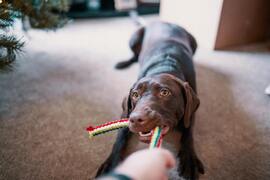 You may remember that I contacted a few suppliers and manufactures with regards to the dog toys that they make and supply. I’ll put a link to those blog posts here: I was relieved that I did get some responses because after a couple of days I was starting to think that I might not hear anything. But it is important to remember that these are big companies, with lots of customers and lots of emails to go through. My first response was from Rosewood Pet Products, a company that you will see in many places, including my own, I love their range of products across most pets. It’s important for me to be clear that I’m not attacking these companies, the purpose of my open letter was to raise the question and I am pleased that they did give me a response: Email from Rosewood Dear Rebecca, Thank you for your enquiry. For your pets’ safety, examine the toy from time to time for wear and tear and replace it when appropriate – is referring to replace the toys when necessary. With regard to - no information about what the product is made from or how it should be disposed of – We don’t believe we legally have to declare what the product is made from or how it should be disposed of for pet toys, unless it contains batteries. However, we are looking in to doing this for future products and packaging. Recycling symbols etc are put on some customer specific products, as per customer specific requests. We would advise to check locally regarding recycling of the toy. Generally, a plush toy is polyester and squeaker and a vinyl toy is vinyl and squeaker. Kind regards, It does seem to me that if more dog owners ask companies about what a product is made from and how it can be recycled, then they may take the intuitive to start providing that information in the first place with out all the effort having to be put in on the part of the us the consumer. I would just also like to point out that by saying they don’t “believe” that they have to label the toy with what it is made off they are creating a back door, in case of any legal issues. Furthermore “Future products” could be next season, next year or in the next decade! My other response was from Pet retail giant – Pets at home, which kind of says it all really: Thank you for getting in touch with us, In regards to the dog toys, if they are in reasonable condition and you think they can still be used by another pet, i would suggest donating it to a rescue center for pets. If they are too damaged, I would suggest throwing them in the bin. If you have any more questions, please let me know. Thanks  Again I was pleased to receive a response, this was through customer service, which I had to go through the websites live chat customer service in order to get an email address. I did expect to get a reply but perhaps I was expecting too much to think that Pets at Home would already have some sort of plan in the pipeline, at least to be addressing the issue. You can be sure that this is not the end of the road and I will continue to ask questions and look for solutions. In the meantime you can help by raising the issue with other dog owners, retailers and manufactures, share this blog or even send your own open letter emails. Think about the toys you buy, if you find a toy you like but it doesn’t say what its made of, snap a picture and share it on social media, how can we make an informed choice without the information #whatsitmadeof Tweet the company or share it on instagram. The more people who ask, the harder it will be for them to ignore. Remember, we are only asking for transparency so we can choose.  This year I came across a company called True Leaf Pet. They make Hemp based products for pets, out of British Columbia, Canada. I was quite intrigued by the different functional treats that were available for both cats and dogs, from calming to joint care. Given the rise popularity of cannabis derived products for people I thought I would have a look at some of the potential benefits and the differences between cannabis and hemp. Although often confused and conflated, Cannabis and Hemp are Not the same. They are part of the same plant family, relatively small, is it made up of 11 groups that overall contains around 170 different species of flowering plant (and I thought I had a big family!). This family called, Cannabaceae, are upright or climbing plants, with one seed fruits and flowers that have no petals. This plant family also contains another commercially important plant – Hops! Family aside, the important differences; the mind-altering substance found in cannabis, THC (the part that gets people high) is almost nonexistent in hemp, less than 0.02%. Humans have been growing and cultivating hemp for centuries and yet few people seem to know very much about an amazing plant it is! It has a huge number of properties and applications including but not limited to: paper making, textiles, fireworks and nutrition. Hemp production requires very little maintenance, watering or fertilizer, producing a very high yield with less input than conventional crops. So, hemp is far better for the environment.  What your dog benefits from is found in the seeds of the hemp plant. These are packed with omega 6 omega 3 fatty acids. Your dog can not produce these essential fatty acids themselves; they need to have them in their diet. These fatty acids form parts of hormones in the dog’s body that aid the process of smoothing out muscle contractions, additionally the control of swelling and even the regulation of body temperature. By helping your dog to maintain a good supply of omega 3 and 6 hemp treats can contribute to better joint health and reduce the risk of skin problems. It’s great to know that there are treats available that can contribute to the health and well being of your pets and be environmentally positive. I haven’t started using these products yet, as my jack Russell, Ella has pancreatitis, but more on that at another time. I have started, just one of the True Leaf Pet products at the moment, Calming support for dogs with hemp, green tea and calming herbs: lemon balm and chamomile. They are grain free but also quite pricey, with an RRP of £4.49 for a 50g bag. It is important to remember however that this is not some “throw away treat” and it does serve a beneficial function to your pets health. It is also worth noting that the calming treat contain chicken and turkey, so would NOT be suitable for any dogs who are sensitive to poultry. Additionally due to the high content of omega 3 and 6 content in the hemp seed that makes them so useful, the crude fat content is high and therefore may not be the right treat for some pets.
I’m looking into whether the product packet is recyclable, which would be a great win if they are!  Hello everyone, I'm back again this week on the subject of dog toys and there disposal. You may remember a few weeks ago I did a toy box de-clutter and was left with more than few old toys, that were no longer fit for purpose. Following on from that I spent a mind numbing amount of time trying to figure out to do with the left overs; the destiny of toys after the box, left me feeling rather powerless as a consumer and frustrated that suppliers and manufactures were telling us that we should be replacing these products when they show signs of 'wear' but are deliberately leaving out a method of disposal. Now some people I have spoken to about this have said that surely in would just go in the bin? And that is entirely my point. Just because the toy goes out of sight into the bin to be collected at the road side and driven away doesn't mean that it has some how vanished! It seems increasingly clear that from the manufactures and retailers point of view, once we the consumer have purchased the toy it is then our problem to deal with it's disposal. That might sound obvious, we own the product, we bought it we should be responsible for it. The availability of a range of dog toys that are suitable and safe for our dogs may be huge but once you factor in disposal that would avoid landfill your accessible options seem to plummet. Add to this that many of the dog toy labels that I see provide little to no information about what the toy is made from, and therefore how it can be disposed of; so it can be difficult to make an informed choice. I wanted to get some feedback from some of the companies that supply some of these dog toys, so I sent a few emails to some different manufactures and suppliers. They went a bit like this: Dear Pets at Home, As a dog owner I love to buy my dogs toys to play with, whether it’s a vinyl squeaky ball, or a Benjamin bear (which is a favourite). I see Pets at Home stores in so many places, with a huge variety of dog toys in all manner of shapes and sizes. Everyone that I have seen carries some sort of notice or safety advice regarding supervising dogs at play and to replace a toy when worn or damaged. Can you please clarify what Pets at home intends that I, the consumer should do with your products, once it has been deemed appropriate to replace the toy? I have as yet been unable to find one of your products that states how it should be disposed of. I would greatly appreciate some clarification on the matter. Kind regards Rebecca.  As of yet I haven't heard back from any of the companies I contacted. Please feel free to copy this letter to email any companies or business that you feel could do with addressing Pet product waste. I will keep you all up to date with any replies I get on my facebook page. |
AuthorRebecca, owner and founder of R and R Pet services. Archives
May 2022
Categories |
Thank you for visiting!
Copyright © 2016
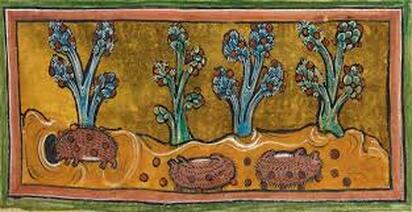







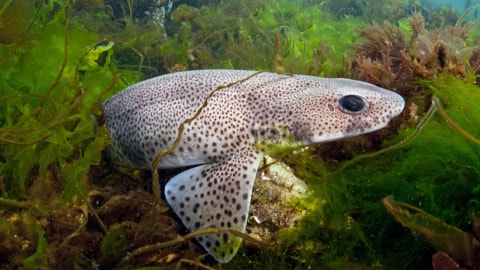





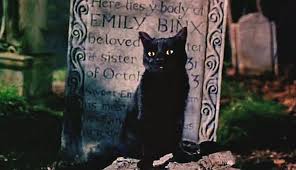






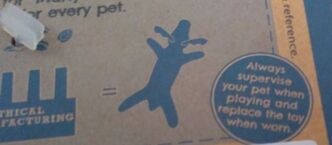
 RSS Feed
RSS Feed